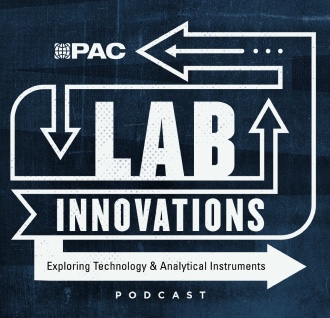Jul-2024
Low-carbon hydrogen potential with autothermal reforming
How advanced technology and the development of standards will help lower the carbon intensity of hydrogen production.
Phil Ingram
Johnson Matthey
Viewed : 3673
Article Summary
The use of hydrogen is not new. Fuel cells were invented more than 150 years ago and have been providing on-board power to space missions for more than 50 years. Industry makes millions of tonnes of hydrogen every year, with its main uses (in pure and mixed forms) being oil refining (33%), ammonia production (27%), methanol production (11%), and steel production via the direct reduction of iron ore (3%). Hydrogen is manufactured primarily from the conversion of natural gas (~75%) and coal (~20%), with 2% from electrolysis.
To lower greenhouse gas emissions, low-carbon hydrogen, produced using renewable energy sources or with carbon capture and storage (CCS) technologies, is a vital, clean, and versatile energy source. Its market potential is significant, driven by increasing global efforts to decarbonise industries, transportation, and energy production. However, investments in hydrogen infrastructure, research and development, and policy support are crucial for unlocking the full potential of this promising new energy source and accelerating the transition towards a sustainable future. So, what do we need to unleash the potential of low-carbon hydrogen, and what solutions does technology offer today?
Role of global standards
While there is a strong ambition for low-carbon hydrogen, the development of relevant standards remains an ongoing process. The EU Hydrogen Strategy, launched in July 2020, lays out a bold vision for fostering a hydrogen economy. Although this strategy does not detail technical specifications, it does provide a robust policy framework and roadmap for scaling up hydrogen production, infrastructure, and demand. The EU Renewable Energy Directive (RED II) complements this strategy by setting stringent sustainability criteria for renewable fuels, including hydrogen sourced from renewables like wind, solar, and biomass.
To ensure the quality and origin of hydrogen, including low-carbon variants, the European Hydrogen Quality Assessment (EHQA) offers a voluntary certification scheme. This initiative, developed by industry stakeholders, provides a standardised framework to assess sustainability and traceability in hydrogen production processes, bolstering trust among producers, consumers, and investors.
Even though several ‘low carbon hydrogen standards’ have been announced, the methodologies and definitions are still under discussion. These encompass hydrogen derived from various sources with differing carbon footprints. Current hydrogen standards, such as ISO14687 and IEC62282, primarily address its quality as a feedstock yet fail to account for its carbon intensity, creating some lack of clarity as to the levels of decarbonisation that can be achieved.
Overall, standards will play a pivotal role in driving the transition to a sustainable, low-carbon economy, emphasising environmental integrity, safety, and quality. However, to foster the growth of low-carbon hydrogen, current and new standards must be developed to specifically target carbon emissions. This would enable a comprehensive comparison of different production pathways and provide clarity for end users.
Role of new technology
While electrolytic hydrogen’s role in decarbonising our energy mix is undeniable, scaling up its production faces some short-term challenges. Rapid development of decarbonised hydrogen production technologies, especially those that can be deployed at scale, is required.
The traditional method of producing hydrogen is via the steam methane reforming (SMR) process, which converts natural gas into syngas. However, while SMR is a highly efficient and cost-effective method for large-scale production of unabated hydrogen, it is suboptimal for low-carbon hydrogen. In comparison, other production techniques provide significant benefits.
For low-carbon hydrogen production, autothermal reforming (ATR) and ATR coupled with gas heated reforming (GHR) offer more efficient and cost-effective solutions than SMR. These processes are proven at scale and represent advanced approaches to generating hydrogen with improved efficiency and flexibility compared to conventional methods.
ATR and ATR with GHR processes
Within the ATR process, a mixture of hydrocarbons is introduced into a reformer reactor. Unlike conventional SMR, ATR involves a simultaneous combination of partial oxidation and steam reforming reactions enabled by adding oxygen. Inside the reactor, the oxygen partially oxidises the hydrocarbons, producing heat and syngas. Subsequently, steam reforming occurs, with steam reacting with the remaining methane to yield additional hydrogen and carbon monoxide. This dual reaction mechanism allows for efficient hydrogen production while simultaneously generating the heat necessary for the endothermic steam reforming reaction.
As the ATR process does not require external heat input, there is no CO2 generated from combustion. Used alone, the heat generated from the ATR process can be recovered to produce steam, making it an ideal solution where steam is a valuable co-product. However, where this is not the case, the ATR flowsheet can be further enhanced by including a GHR. The GHR increases the overall energy efficiency of the system by using the excess heat generated by the ATR to drive reforming reactions. This results in best-in-class energy efficiency, requires less natural gas per unit of hydrogen, and can achieve a lower carbon intensity for the same capture rates.
JM LCH technology
As the world transitions to hydrogen as a clean energy source, meeting carbon intensity and carbon capture requirements is paramount for the environment and to harness policy incentives effectively. These incentives encompass a range of financial benefits, such as feed-in tariffs, tax credits, grants, and loan guarantees. JM has developed its LCH processes to not only meet these demands but exceed them, as well as provide a versatile solution that can adapt to varying feedstocks and be deployed in large-scale applications (see Figures 1 and 2).
The technology, based on proven units previously deployed in methanol and ammonia production, uses JM’s proprietary ATR, or GHR combined with ATR, technologies to create a higher hydrogen yield and greater energy efficiency than standard SMR technology for low-carbon hydrogen production. The process delivers a high CO2 capture rate, high efficiency, and low-cost solution, providing significant benefits compared with SMR and alternative ATR technologies. The approach is based on established chemical process engineering, designed to operate at scale and enable carbon reduction for industry, dispatchable power, domestic heating, and transport.
When compared to a conventional SMR, JM’s LCH technology demonstrated:
• 10% lower natural gas consumption
• 10% less CO2 produced
• 75% lower capital cost for the CO2 capture system.
The use of JM LCH technology de-risks a project by minimising the impact of increasing feedstock costs, increasing costs of carbon dioxide transmission and storage, or any governmental scheme for carbon taxation. ATRs are already used in the production of syngas in technologies such as methanol production. These plants are very large and demonstrate that the technology can produce low-carbon hydrogen at a large scale.
Add your rating:
Current Rating: 5

















